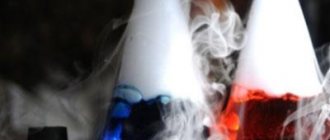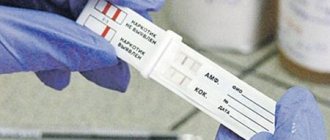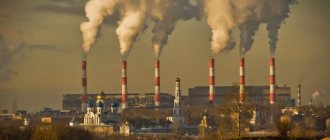Toxins in the human body
Our body is the house in which the soul lives. And if we continue the analogy with the house, then there are indeed a lot of coincidences. The body also needs energy, care for external attractiveness and, of course, cleaning. Moreover, if everything is clear with general hygiene, then not everyone knows about cleaning “inside the building”.
What are toxins and where do they come from?
Essentially, toxins are poisons, that is, substances that have a poisonous, toxic effect on the body. The extent of this effect may vary depending on the type and amount of the toxic substance. But where do they come from? Some toxins are produced by the body itself during its life processes. For example, when digesting food, when some of the unprocessed foods begin to decompose or ferment and the body does not have time to remove them. The reason for this may be either an excessive love of food or some diseases of the gastrointestinal tract associated with the inability to digest certain substances. Also, a lot of toxins are released during illness when the immune system breaks down pathogens. But there are poisons that enter the body from the outside and the list of their sources is impressive:
- Air – people don’t even always notice that the air is not clean enough. But exhaust gases and industrial emissions are a powerful source of toxic substances for people;
- Water is the heavy groan of any large city. In addition to hardness salts, fertilizers from agriculture, dangerous compounds from chemical heavy industry and other unpleasant impurities seep into taps from groundwater;
- Food - it’s sad to see how healthy, strong people invest in their hospital card by eating huge quantities of fast food, snacks, processed foods and drinks of dubious quality;
- Furniture and building materials - horror stories about formaldehyde in furniture, unfortunately, are often confirmed by harsh reality. And the list of toxic substances found in residential areas is quite impressive;
- Smoking – tobacco smoke is a storehouse of narcotic, toxic substances and tars;
- Household chemicals and cosmetics - the more effective the product, the more aggressive its composition, so these products are also included in the list of suppliers of toxins.
But why are they so dangerous and should they be so avoided?
How do toxins manifest themselves in the body?
To begin with, a simple analogy: if you water a plant with a large amount of herbicide, it will die, if there was a little of this poison, then the flower will slowly wither. The human body also reacts to contamination with toxins depending on the intensity. But the general manifestations will be like this:
- Deterioration in the color and texture of the skin - it will become grayish or sallow, pockets of inflammation may begin, and swelling will appear;
- Chronic fatigue - due to a decrease in the overall tone of the body and a slowdown in metabolism;
- Gastrointestinal dysfunction - usually manifested by constipation, nausea;
- Disruption of the nervous system – cold extremities, convulsions;
- Unpleasant pungent odor of sweat and other natural secretions.
In addition, the German doctor Rekaveg identified 6 degrees of contamination of the body with toxins:
- The excretion stage is a state of balance when all toxic substances are freely eliminated naturally;
- Reactions to the accumulation of toxins are symptomatic manifestations that affect well-being, the functioning of the excretory systems and local reactions in the area where toxins accumulate;
- The stage of redistribution of waste - when toxic substances move throughout the body and cause the formation of papillomas, lipomas, fibroids, enlarged lymph nodes, weight loss or obesity;
- The stage of saturation with toxins is accompanied by neurological symptoms without other clinical manifestations;
- The stage of destruction is the manifestation of irreversible changes, including changes in blood composition;
- The stage of malignant manifestations is the formation of malignant neoplasms in the body.
The picture is not the most rosy. But it's not that hard to avoid. Let’s try to figure out how exactly.
How to avoid excessive contamination of the body with toxins?
It would seem that the answer to this question is simple - just remove them from the environment. But the following recommendations will indicate exactly how to change your environment in order to reduce the risk of intoxication:
- It is impossible to change the air in the city, therefore, in order to reduce its impact in large cities, you should avoid jogging and even walking near busy highways, use high-quality ventilation systems, and ventilate rooms where there is a lot of copying equipment. You should also try to spend more time in green areas or outside the city;
- Don't skimp on water filtration systems or purchase purified bottled water. You should also not rush to drink spring or well water, since it can wash away harmful substances from the soil, for example, nitrates;
- Avoid or limit fried foods, especially in large amounts of oil - when heated and overheated, fats form strong carcinogenic substances that are very toxic and mutagenic;
- If possible, avoid various kinds of snacks as much as possible - crackers, nuts, chips and other “delicacies”, which contain very harmless components to impart taste and smell;
- Stop smoking, including passive smoking - tobacco smoke contains an impressive list of toxic substances, including cyanide;
- Pays attention to the purchase of furniture and the use of building materials - raw materials for them may be mined in environmentally unfavorable areas or may not meet the requirements for chemical composition;
- Limit the use of aggressive detergents and cleaning products in the home, use more organic ready-made products instead, or make them yourself from safe ingredients;
- Try to eat more raw vegetables, high-quality food, drink more water - this will not only reduce the intake of toxins in the body, but will also prevent their accumulation.
Now, knowing the enemy by sight, it is much easier to keep your body healthy and vigorous and enjoy life.
History of the study of poisons
Humanity has encountered poisons throughout its history, and until alchemists and then chemists took up the matter, people dealt with poisons of plant and animal origin. There are about seven hundred species of poisonous plants and approximately five thousand species of poisonous animals known in the world, interaction with which has serious consequences, including death.
People have been actively exploiting poisons for centuries, using them as medicines, weapons and as antidotes. Poisons were a means of blackmail, a tool in politics, and at the same time they tried to use poisons for good, for example, to get rid of rats or insects that cause great harm to townspeople and rural residents.
With the development of the predecessor of chemistry - alchemy, poisons began not only to be used, but also to be invented, mixing various natural ingredients of both organic and inorganic origin. Compounds of toxic metals (lead, mercury, and so on), natural poisons, and their combinations were used, and “knowledgeable people” were worth their weight in gold and were surrounded by an aura of gloomy reverence and fear. In the 16th century, Ambroise Paré even wrote the famous “Treatise on Poisons” - a book that is still known today.
With the development of science, the range of poisons has only expanded, because chemists have learned to synthesize new substances that do not exist in nature. In addition, humanity has become acquainted with radioactive elements, which are also the strongest poisons for our body.
Nowadays, poisons are used:
- in agriculture as fertilizers, pesticides (pesticides), insecticides (insect repellents), ratacids (poisons for rats and mice);
- in medicine (in microdoses) as medicines, antidotes, narcotic drugs;
- in production as ingredients;
- in chemical laboratories as chemicals, reagents;
- in everyday life as means for cleaning, cleaning, washing and even cooking (for example, vinegar essence);
- in societies at a primitive stage of development, poisons are still used for hunting in our century;
- as weapons (gaseous poisons of mass destruction were first used during the First World War);
- in the drug business - as substances that alter consciousness and cause addiction (drugs and alcohol);
- Well, suicides use those poisons from the list above that were available to them.
Castor beans - ricin
When it comes to plant toxins, ricin is often considered the deadliest. Ricin poisoning occurs when a person consumes castor beans, the same plant from which castor oil is obtained.
Symptoms develop slowly, but they can be terrifying. The poison causes blockage of the arteries. Because blood cannot circulate properly, your organs begin to starve. Death usually occurs within a week. If ricin is inhaled or injected, the amount needed to kill a person is very small—the poison could fit on the head of a pin.
One well-publicized example of ricin poisoning occurred in 1978, when Bulgarian dissident Georgi Markov was killed by a James Bond-style blow from an umbrella. The umbrella was designed to inject a small amount of ricin the size of a pinhead.
Unfortunately, there is no known antidote for ricin poisoning. Even more interesting information in the selection of the 5 most famous art forgeries in history.
Sensitivity to odors
It's not just pregnant women who can suddenly become sensitive to odors. Also, people with a chronic toxic load in the body in some cases develop sensitivity to odor.
So, if you suddenly can't stand the smell of your coworker's perfume, if the smell of cleaning products makes you sick, if you can't sleep on freshly laundered and fragrant bedding, this could be a sign that your body is too heavily contaminated with toxins and has developed an oversensitivity. to chemicals and does not want to be overloaded with chemicals again.
Especially if you develop headaches from smells of the type mentioned, this may indicate a high toxic load on the body.
Kinds:
- Organic, naturally occurring,
- Inorganic poisons of natural origin,
- Animal toxins
- Poisons synthesized by plants
- harmful bacteria,
- Mycotoxins.
Depending on the origin and perception of the poison by the human body, the reaction can be completely different. It is worth noting that all toxic substances have a varied effect on humans, which makes it possible to divide them into several types.
Top list
Polonium is considered the deadliest poison. One gram of polonium vaporized into air could theoretically kill up to 1.5 million people.
It is incredibly dangerous due to the intense radioactivity of the alpha particles. Alpha radioactivity is not dangerous when it is outside your body—a piece of paper or even thick skin can easily stop the deadly particles. It is when polonium enters the body that it causes havoc.
Polonium came into the global spotlight when it was used to kill former Russian spy Alexander Litvinenko back in 2006.
Go to the Land of Advice home page for more interesting stories.
What are the poisons?
The world of poisons is extremely diverse, and the number of their classifications is large. Chemists, doctors, toxicologists, forensic experts and other specialists divide poisons based on such characteristics as toxicity, chemical structure, conditions of poisoning, clinical picture (symptoms), etc.
Most often, poisons are distinguished by the localization of their action: local (act at the site of injury, like acids or alkalis) and absorbable (act on the blood, organs and tissues, nervous or cardiovascular system, as well as on the functions of individual organs and systems).
Read more about poisoning by poisons and toxins
First aid and treatment
A specific antidote for exposure to arsenic compounds, for poisoning with hydrazines - pyrodoxine, for snake bites - antisnake serums. In case of shock and collapse, 40% glucose solution up to 150 ml is administered intravenously again with small doses of insulin (12-16 units), cardiac medications, detoxifying plasma replacement solutions (hemodez, etc.) 300-400 ml drip (50-60 drops per 1 minute), it is possible to use steroid hormones. The effectiveness of exchange blood transfusion is debatable. With a rapid increase in symptoms - hemodialysis (see) or peritoneal dialysis (see), copious rinsing of the gastrointestinal tract. tract.
Methods for determining the content of G. i. in the environment depend on a specific poison that has a hemolytic effect.











